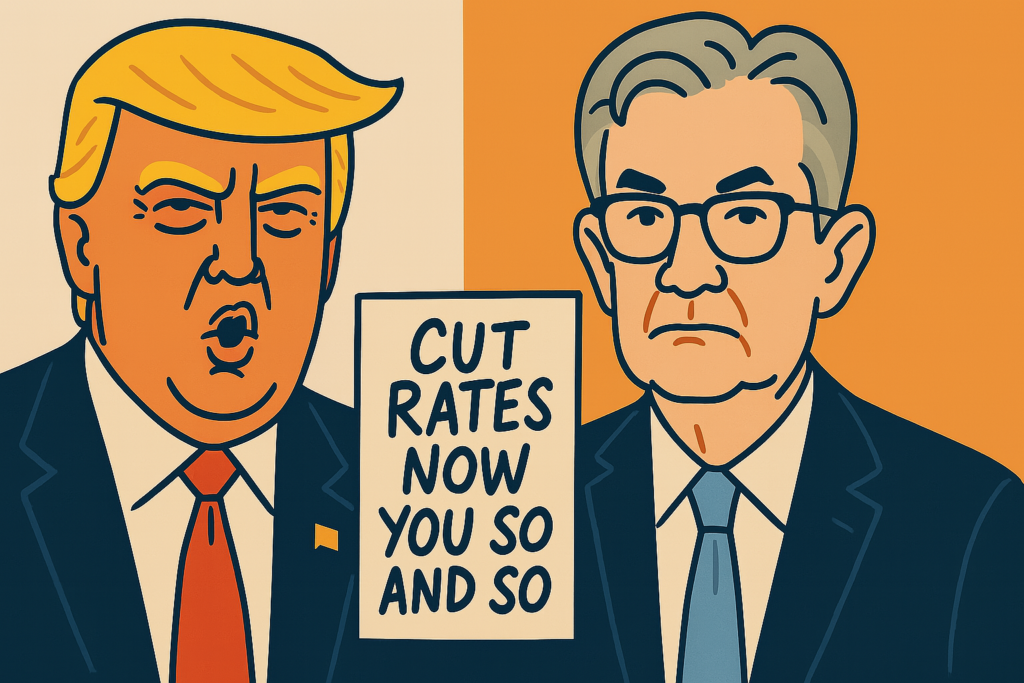While GDP data for Q1 are now “old” and seemingly of limited use, it makes little sense to forecast global growth in Q2 and beyond without at least knowing the starting point.
We estimate, based on data for 19 major economies, that global GDP growth slowed to
-2.6% yoy in Q1 from +3.0% yoy in Q4 2019 and to -4.3% qoq from +0.6% qoq in Q4. Of these 19 major economies only Chile recorded positive quarter-on-quarter growth in Q1.
The outlook for Q2 and beyond is clouded by the unpredictable interplay between the:
1) Complex mathematics and science behind the spread of the covid-19 pandemic;
2) Often unprecedented measures which governments have taken to contain the pandemic, including national lockdowns varied in their length, scope and efficacy;
3) Multiplication of policy measures designed to mitigate the slump in global growth;
Nevertheless, the consensus forecast for Q2, which we share, is that global GDP will likely contract even more sharply than in Q1. We forecast, based partly on the fall in the global PMI Composite Output index in April-May, that global GDP will contract 9% qoq in Q2, with most major economies in recession. This would imply that global GDP in Q2 will be similar to that of Q4 2015 and that four years’ worth of growth was wiped out in H1 2020.
We forecast global GDP growth in Q3 and Q4 at respectively +3.0% qoq and +3.5% qoq, and to resemble that of a square-root. Our core scenario is that most national lockdowns will continue to be eased and that widespread central bank policy rate cuts in the past year will have a lagged, positive impact on borrowing, expenditure and investment.
In level terms this implies that GDP’s path will be asymmetric, with its recovery in H2 2020 far more modest than its collapse in H1 2020, and will resemble that of a hockey stick. We estimate that GDP in Q4 would be at a similar level as three years prior.
We have some sympathy with the view that global GDP (level) may follow a W-shaped path (in the event of a “second wave” of covid-19 cases) but attribute low odds of a U and in particular L-shaped recovery (i.e. a depression rather than a recession).
Q1 2020 update – Global GDP growth slowed very sharply and world was in recession
While GDP data for Q1 are now “old” and on the surface of limited use, it makes little sense in our view to forecast global growth in Q2, let alone the shape of a possible recovery in the second half of 2020, without at least fleshing out the numbers for Q1 and having a sense of the starting point. Using national data for 19 major economies/economic blocks accounting for over two-thirds of world GDP (on a PPP-basis), we estimate that global GDP growth slowed, in year-on-year (yoy) terms, to -2.6% in Q1 from +3.0% in Q4 2019 and in quarter-on-quarter (qoq) terms to -4.3% from +0.6% in Q4 (see Figure 1).
Of these 19 major economies only Chile recorded positive quarter-on-quarter GDP growth in Q1, according to our estimates (see Figure 3).
The bottom line is that global GDP growth collapsed in Q1 to a multi-decade low, wiping out six quarters worth of (admittedly modest) growth, and the world was in recession based on the IMF’s definition (see Lessons learnt from Q1 collapse in global GDP, 21st May 2020). Hong Kong, Japan and Mexico were already in recession in Q1 and the European Union, United Kingdom, Canada, Singapore and Thailand came extremely close[1]. Australia in Q1 recorded its first negative quarter-on-quarter rate of growth (-0.3%) in nine years.
Forecasting global GDP growth in the eye of the storm
The million Dollar question of course is what next and there is little consensus beyond the belief – which we share – that global GDP will likely contract even more sharply in Q2 2020.
Many countries are still facing a triple health, economic and social shock although the overall trend has been for countries to (cautiously) move to the right on the scale in Figure 2. This trend of policy-makers shifting their focus to (gradually) unwinding lockdowns, getting people back to work and their economies going again unsurprisingly has been most obvious in countries where the covid-19 death rate has been declining (this includes the UK in our view). However, this has not been a blanket rule. Since early May US President Trump has arguably tried to re-focus the narrative on the US economy (and China) despite or more cynically because the US covid-19 death rate was still elevated (see Conservative FX markets testing (some) extremes, 7th May 2020).
The near-term outlook is ultimately clouded by the fluid, at times self-reinforcing and often unpredictable inter-play between:
- The complex mathematics and science behind the spread of the covid-19 pandemic. The coronavirus outbreak is now five months old but governments, central banks, corporates and households still face a critical “known unknown”, in our view, namely the rate of transmission (R0) which in turn is influenced by a number of factors including the total number people who i) had the coronavirus, acquired immunity and are no longer contagious and ii) currently carry the coronavirus (whether symptomatic are not) and are thus potentially infectious (see Governments and policies adapting to critical known unknown, 27th March 2020).
- The often unprecedented measures which governments have taken to contain the covid-19 pandemic and their impact on corporate and consumer behaviour and ultimately economic growth. These measures of course include national lockdowns which have varied greatly in their length, scope and nature and the extent to which they have been enforced or adhered to (see below).
- The multiplication of policy measures designed to mitigate the slump in global supply and demand. The list of central banks’ conventional and increasingly unconventional monetary easing and credit/liquidity enhancing measures grows every day while governments’ emergency fiscal stimulus packages are setting new precedents in terms of both their size and reach.
The US approved in late-March a historic fiscal rescue package of $2trn and the UK has in effect green-lighted three fiscal packages which partly underwrite employees’ wages. The European Union has approved a €500bn rescue fund and is looking to set up a second €750bn fund. International organisations have also announced aid packages and are calling for a temporary moratorium on foreign debt repayments for the poorest emerging market economies.
Past and future GDP growth rates closely tied to complex evolution of national lockdowns
Many domestic and international factors impacted domestic GDP growth rates in Q1 and will influence growth in Q2 and beyond. However, the main factor has been and will continue to be the extent to which national lockdowns were introduced and are being relaxed, along with associated self-isolation and social distancing measures, in our view (see Lessons learnt from Q1 collapse in global GDP, 21st May 2020).
Most Asia-Pacific and European governments have in the past few weeks started unwinding their national lockdowns. The rate at which national lockdowns are being unwound is arguably in part the by-product of complex negotiations between i) country-leaders, ii) health ministers, scientists and health experts who typically favour a more cautious approach; iii) finance and economy ministers, heads of industry and corporations who on the whole are pushing for a faster relaxation of national lockdowns; and trade unions, workers and households whose views on lockdowns are arguably diffuse.
However, the common thread is that the easing of lockdown measures – including people returning to work and pupils to schools – has been and will likely remain gradual and subject to periodic official reviews. What policy-makers know they don’t know will continue to influence country-specific containment plans, as well as domestic and global measures to support economic growth while ensuring the functioning of financial markets.
Contraction in global GDP will very likely be far greater in Q2 than in Q1
In this context forecasting global GDP’s path in coming months, let alone in the long-run, is an exercise in faith as much as rigorous analytical work with conventional economic relationships and wisdoms likely to be tested to breaking point. This caveat aside our core scenario is that the quarter-on-quarter contraction in global GDP will likely be far greater in Q2 than in Q1.
- A handful of Asian economies which suffered particularly sharp quarter-on-quarter GDP contractions in Q1, including China, may post modestly positive growth in Q2.
- In countries at a more advanced stage of unwinding their national lockdowns – for example Belgium, Denmark, Switzerland and New Zealand[1] – GDP likely contracted further in April (from already very depressed levels) but may have rebounded in May and could recover further in June. If correct this could imply that quarter-on-quarter GDP growth could stabilise in Q2 whilst remaining firmly in negative territory (i.e. GDP will continue to fall in Q2 but at a similar pace as it did in Q1).
- However, for most economies – including the United Kingdom – national macro data suggest that the hit to economic activity was far greater April-May (i.e. two thirds of Q2) than in March and certainly January-February. It would take a miraculous recovery in supply and demand in June for these economies to post stronger, let alone positive, quarter-on-quarter GDP growth in Q2.
As a result we forecast that most national economies will likely be in recession in Q2 (see Figure 3).
The global PMI Composite Output index[2] rebounded to 36.3 in May from a record low of 26.5 in April and global economic activity will likely recover further in June, in our view. However, the global PMI – which fell by 5.4 percentage points in Q1 2020 (the largest contraction since Q4 2008) – is still very likely to fall far more sharply in Q2. Even if the global PMI rises another 10pp in June, it will have fallen nearly 10pp in Q2. The corollary, based on the positive historical relationship between the change in the global PMI and quarter-on-quarter GDP growth, is that the latter is likely to decelerate even further in Q2 (see Figure 4).
Our current global forecast is that GDP will contract about 9% qoq in Q2 or more than twice as fast as in Q1 (see Figure 5). If correct this would imply that the GDP level in Q2 will be similar to that of Q4 2015 and that four years’ worth of growth was wiped out in H1 2020.
Moreover, even an accurate forecast of the rate of contraction (and recovery) in a nation or the word’s economic output would provide only a very partial assessment of the broader economic, financial and social costs associated with the coronavirus pandemic. Specifically, such GDP-focussed analysis does not factor in the unprecedented cost of fiscal, credit and monetary policy measures designed to curtail this contraction in output nor the drop in households’ net wealth – a cost which will likely have to be borne over many years if the experience of the Great Financial Crisis is anything to go by.
Shape of global economic recovery: Square roots and hockey sticks
We expect quarter-on-quarter global GDP growth in Q3 and Q4 of respectively +3.0% and +3.5%, following two quarters of negative growth (see Figure 5). These would be the fastest rates of quarterly GDP growth in decades, partly a reflection of course of very “favourable” base effects, and the shape of global GDP growth would resemble that of a square-root.
In level terms this implies that GDP’s path will be asymmetric, with its recovery in H2 2020 far more modest than its collapse in H1 2020, and will resemble that of a hockey stick.[1] In this scenario we estimate that in Q3 GDP would still be about 10% lower than in Q4 2019 and at a similar level as it was in H2 2016 and in Q4 would be at a similar level as three years prior.
As noted in previous reports this highlights the importance of explicitly stating whether forecasts for GDP pertain to levels or growth rates (i.e. the first derivative) and if the latter whether quarter-on-quarter or year-on-year growth rates (see Growth interrupted: World was in recession in Q1 2020, 24th April 2020). Most analysts and journalists fail to specify whether they are referring to GDP level or growth rates, rendering any discussion about the shape of growth rather meaningless. Others, including the Financial Times in a recent article, have confusingly applied the same recovery shape to both the level and growth rate of GDP.
Beyond the fact that growth in the second half of 2020 will benefit from (perversely) very favourable base effects, our scenario is premised on our expectation that in coming months:
- Most national lockdowns will continue to be eased (or in some very limited cases even shelved altogether) even if social distancing, self-isolation, quarantine and others associated measures and guidelines are likely to remain in force.
This should result in a tentative virtual cycle of a slow rise in the number of people returning to work and aggregate wages and gradual pick-up in retail sales and overall consumer demand. At the same time we expect most governments and central banks to maintain policies to support fiscal spending, worker wages, household and corporate lending, and to ease the pressure on household and corporate balance-sheets.
- Widespread central bank policy rate cuts in the past year will continue to feed through to lower commercial banking rates. This should at the margin lower private-sector debt repayments and help spur corporate and household borrowing, in turn supporting investment and expenditure.
We estimate that the global (nominal) central bank policy rate – a GDP-weighted average of policy rates in 31 major economies – has fallen nearly 130bp in the past year to a record low of just 1.40%. Our analysis points to a historical, inverted, 4-quarter lagged relationship between [a lower] global central bank policy rate and [higher] global GDP growth (see Figure 6 and Central banks to the rescue…with a lag, 27th August 2019). If this relationship holds true going forward, and we highlight below reasons why it may be weaker in the current context, aggressive policy rate cuts could accentuate a post-coronavirus recovery in global GDP growth.
- Still subdued international oil and gas prices will feed through to low energy and fuel prices. This will benefit the vast majority of countries which are net oil importers (e.g. most Asian countries bar Malaysia), energy-dependent industries and companies (such as airlines) and households in the form of lower energy bills and fuel-pump prices.
Multiple headwinds point to modest recovery in global economic activity
However, the impairment to supply and demand and changes in consumer and corporate behaviour are likely to limit the pace of economic recovery, in our view. Note that it still took about seven quarters for global GDP to return to its pre-crisis (i.e. Q4 2007) rate of growth of about 1.5% qoq (see Figures 4 & 6) and nearly seven years for global equities to return to their pre-crisis highs. Specifically we think that households’ ability and willingness to consume will remain partly constrained in coming months by:
- Constraints on purchasing power, as a result of aggregate wages only rising slowly and from a low base. Employment and wages fell sharply in March-May, despite a number of governments introducing national furlough schemes, and will only recover slowly for a number of reasons in our view:
-
- Many labour-intensive industries (e.g. retail, leisure, aviation) still facing limited demand for their products and services – because of lingering covid-19 related concerns – and thus having little incentive and/or financial manoeuvre to start re-hiring aggressively.
-
- Many businesses still unable to operate legally or at least not at full capacity, regardless of demand, due to prevailing lockdown rules and associated measures, including social distancing, self-isolation and quarantines.
-
- Many businesses having closed down.
-
- Schools not fully re-opening before September, forcing people to care for children at home and making it harder for them to accept new jobs.
For these same reasons, the opportunities for households to spend on retail, hospitality, leisure and entertainment (i.e. in shops, restaurants, bars, hotels, cinemas, theatres, hairdressers etc…) will likely be more limited.
- Risk-aversion. Households are likely to remain prone to repaying debts and building-up cash reserves rather than materially increasing spending. For example, at least part of the fall in energy and fuel-pump prices will likely be used to build savings rather than boost consumption, in our view. Corporates are on the whole also likely to remain risk-averse and privilege the build-up of cash reserves (by increasing borrowing and/or cutting costs) over significant investment in capacity, labour or technology. This was certainly the case in March-April for UK households and corporates.
We have some sympathy with the view that global GDP (level) may follow a W-shaped path. A recovery in Q3, on the back of a relaxation in lockdown measures and rebound in consumer demand, could prove short-lived and GDP contract in Q4 if lockdown measures have to be tightened in the face of a second wave of covid-19 cases and deaths.
In a more pessimistic scenario global GDP would be U-shaped, with GDP collapsing in H1 2020, flat lining in H2 2020 before recovering in 2021 (which we would qualify as a short-lived depression rather than an acute recession). In a more extreme scenario, global GDP would be L-shaped, with GDP collapsing in H1 2020 and flat lining for the following 3-4 quarters (an entrenched depression).
We attribute a low probability to a U-shape recovery and a very low probability to an L-shape path for GDP. The easing of national lockdowns, assuming it is not reversed, gargantuan fiscal and monetary policies which have been introduced year-to-date and slow rebuilding of household and corporate balance-sheets are, all other things being equal, likely to fuel a recovery in supply and demand and ultimately global GDP, however slow and gradual, beyond Q2 in our view.
[1] At a national level a recession is typical defined as two consecutive quarters of negative quarter-on-quarter seasonally-adjusted GDP growth.
[2] New Zealand moved from Lockdown Level 4 to Level 3 on 27th April and to Level 2 on 13th May and could conceivably move to Level 1 by end-June.
[3] Purchasing Managers Indices are typically released at the beginning of the month (i.e. May data were released in early June) although preliminary PMI data for the UK and Eurozone are released about two weeks earlier.
[4] Mexico’s Finance Minister, Arturo Herrera, said on 2nd June in reference to Mexico’s economy “Probably what we’re going to see is a rapid, but asymmetric recovery, that is, it will be big but it won’t be at the same rate as the fall.” That is because many businesses, for example restaurants, will still be constrained by social distancing measures (see Financial Times).













